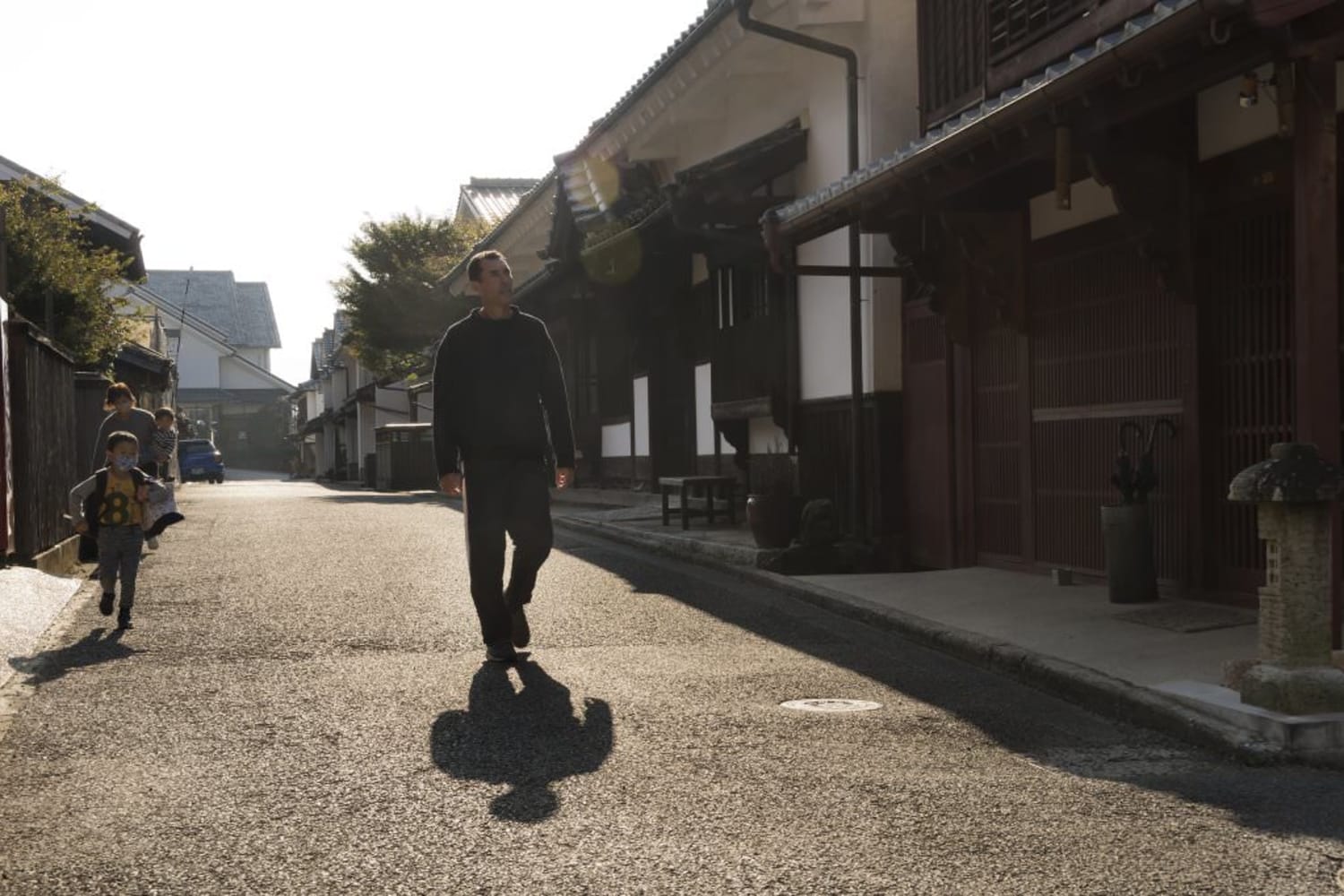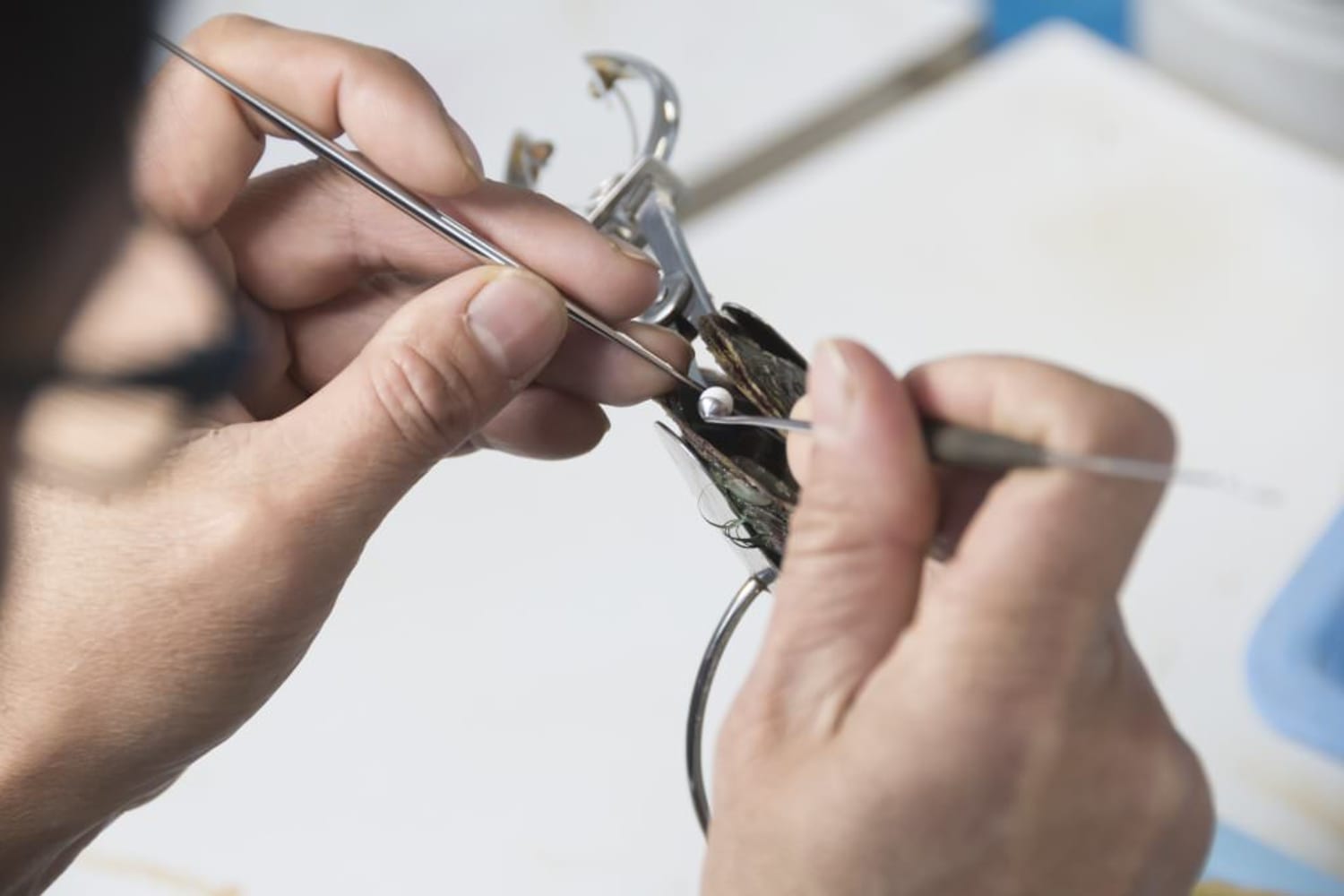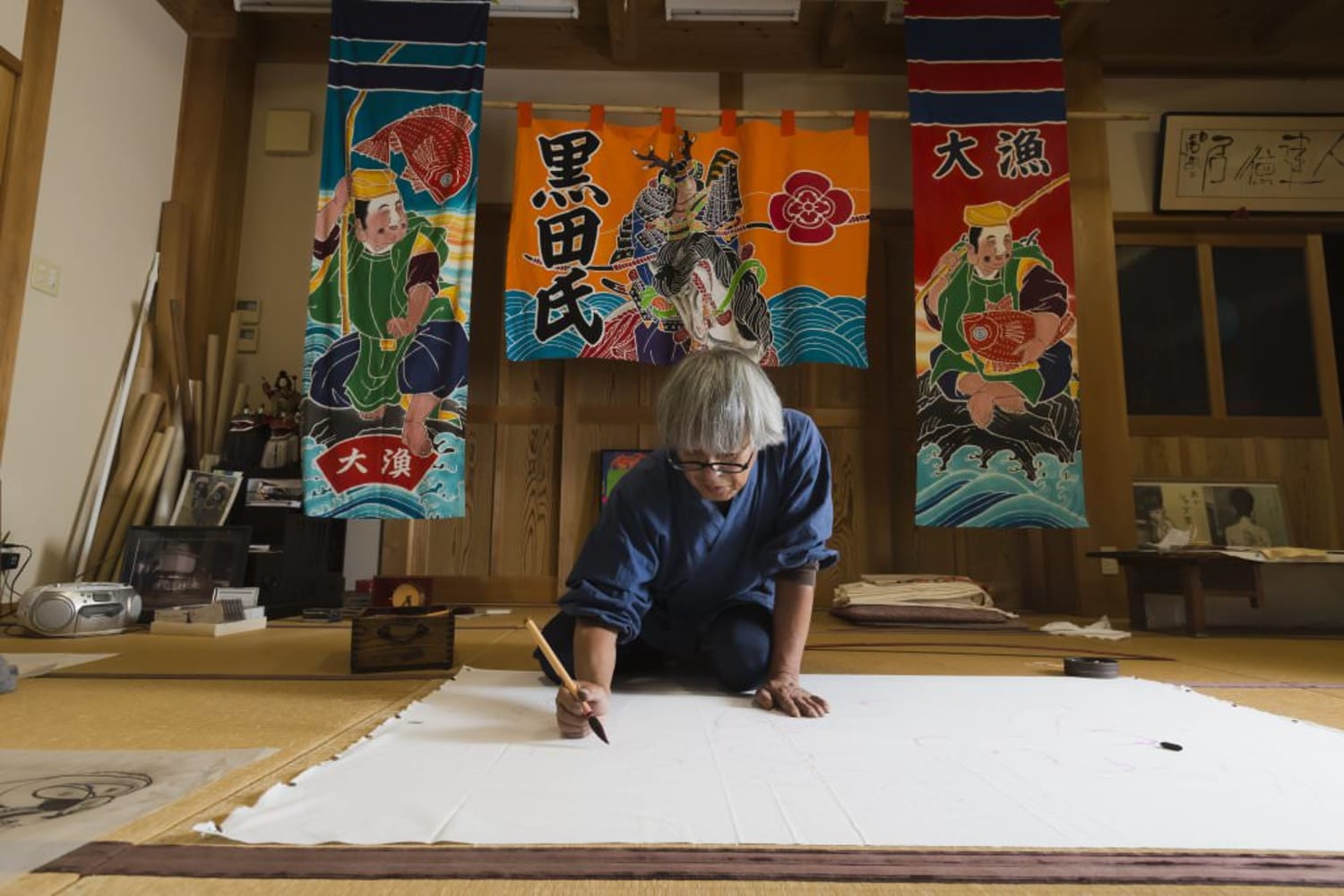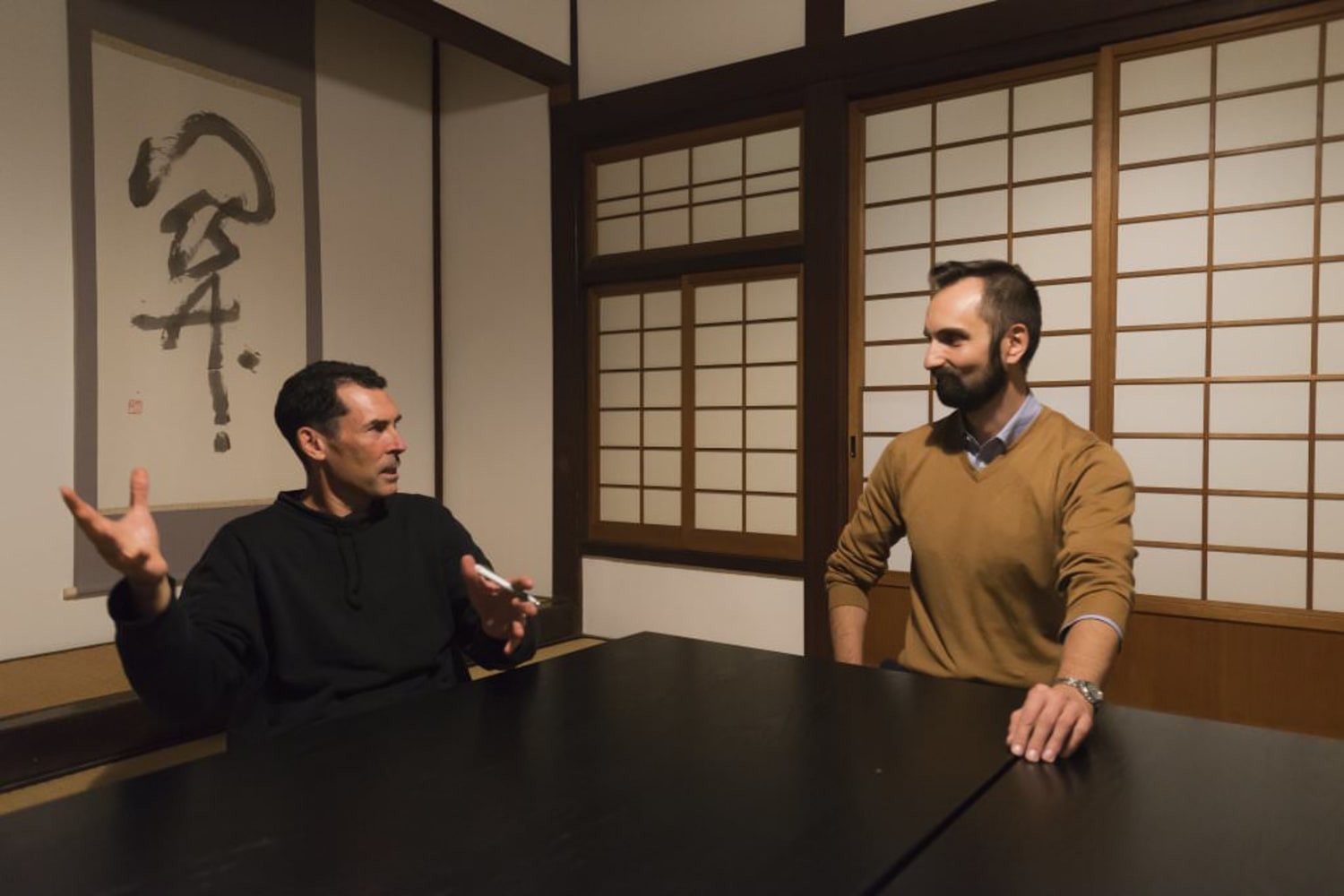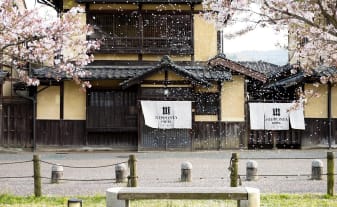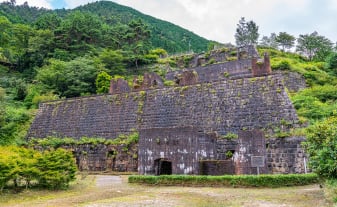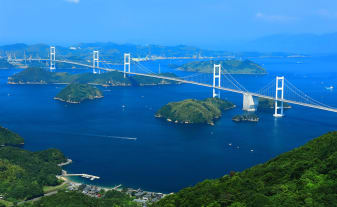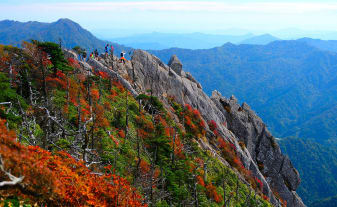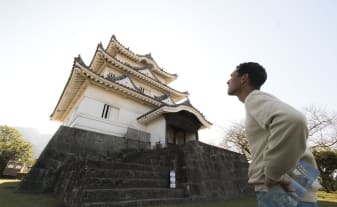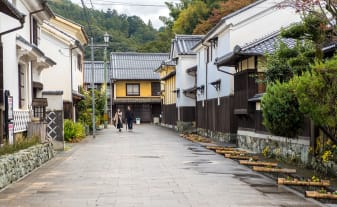 STORIES & GUIDES
STORIES & GUIDES
[Day 4] The Art of Traditional Living in Ehime

Traditions require effort in order to keep them alive. It can also take a lot of work just to get them started.
-
Uwa Rice Museum & Zokin Race – running through history like a schoolchild
At the Uwa Rice Museum, the 80 different kinds of rice on display and the collections of traditional farming tools and implements were impressive, but the main attraction for me was the hallway. Running the length of this former elementary school building, this wooden, window-lined corridor doubles as the track for the Z-1 Grand Prix, also known as the Zokin Race. The object of this race is to push a rag along the floor of the 109-meter hallway as fast as you can, just like the students once did. You may or may not be able to feel what it was like to be a Japanese schoolchild when this building was filled with them. But you might, for a minute, feel like a kid again.
Address: 2-24 Unomachi, Uwa-cho, Seiyo City
Access: From JR Matsuyama Station, 1 hour by train to JR Unomachi Station, then 15 minutes on foot
Open: 9:00 a.m. to 5:00 p.m.
Phone: +81 894-62-6517 -
Unomachi – life in a neighborhood from the past
In the historic Unomachi District, in the southern Ehime town of Uwa, the streets are lined with traditional wooden buildings straight out of a travel brochure. The neighborhood is a designated Historic Preservation District of Traditional Architecture, but carries more than the air of a museum. Moms walking their children to kindergarten trade cheerful good-morning greetings, with each other and visitors alike. In the visitor information center, located in one of the neatly-preserved homes, the staff are just as eager to talk and make you feel welcome. Though the architecture and the occasional faded sign betray its age, the Unomachi District gives the impression that behind the weathered facades is a vitality that endures to the present.
Address: 2-24 Unomachi, Uwa-cho, Seiyo City
Access: From JR Matsuyama Station, take the train to JR Unomachi Station (approximately one hour) -
Kaimei School – a lesson in the early days of Japanese education
Built in 1882 as one of Japan’s first institutions of primary education, the Kaimei School impresses as a place rich in learning. But contrasting with the glass window panes imported from Europe were the students’ meager supplies. Textbooks were too difficult to purchase; students had to learn reading and math from wall charts. Paper was precious; students would reuse each piece until it had turned completely black with ink. Sakai-sensei, dressed in the teacher’s garb of the era, struck a piece of wood with a mallet, and we all sat down to listen to her teach us of the life of students in the Meiji era—a life that was as new to us as it was to those Japanese children of 1882, going to school for the very first time.
Address: 3-109 Unomachi, Uwa-cho, Seiyo City
Access: From JR Matsuyama Station, 1 hour by train to JR Unomachi Station, then 10 minutes on foot
Open: 9:00 a.m. to 5:00 p.m. (admission until 4:30 p.m.)
Closed: Mondays (if a national holiday falls on Monday, the Kaimei School is open that day and closed on Tuesday, the following day, instead), December 29 to January 3
Phone: +81 894-62-4292
Admission: adults 500 yen, children 300 yen -
Musashi Building – steaming rice using methods of old
Among the traditional buildings of the Unomachi District, the Musashi building hardly stands out. Its exact age is unknown; people here simply say it’s from the Meiji era (1868–1912). With no written records, little is known except that the building was once a ryotei—a dining establishment where geisha would perform for guests—and at another point it served as a fishmonger’s shop. Today, the front room is full of household items—clocks, telephones, a sewing machine, an iron heated by a self-contained fire—things that look old but seem too new for this place. In the back is a kamado clay hearth, used in the old days to steam rice. This kamado now serves as a way for people to experience cooking rice the traditional way, splitting pieces of Japanese cedar with a nata machete and lighting a fire using thin, dry cedar branches. Up on the second floor, looking out over a Japanese garden, I pondered the uncertain history of this place, and thought of how amazing rice cooked over a fire could taste.
Address: 3-229 Unomachi, Uwa-cho, Seiyo City
Access: From JR Matsuyama Station, 1 hour by train to JR Unomachi Station, then 10 minutes on foot
Activity cost: 200 yen (must be booked at least a week in advance)
Open: 10:00 a.m. to 2:00 p.m. on the first Sunday of the month
Phone: +81 894-62-6700 (Uwa Sentetsu Memorial Museum) -
Kokemushiro Moss Garden – offering a healing feeling amongst the trees
Along a narrow back road in Uwa Town is a garden of moss-covered terraces, kept cool and green under a canopy of Japanese cedar and cypress. I moved slowly down one rock path. I’d never seen such a place. “Some foreigners visit Ehime just for this garden,” Murakami-san, the owner, told me matter-of-factly. “We get visitors of all ages—some take their wedding photos here.” His family has owned the land for, as he put it, “a long time.” The falling leaves and the tunneling moles makes caring for the place challenging, but ultimately worthwhile. “The greatest thing this place offers,” Murakami-san told me, “is ‘iyashi’—a sense of healing.” Sitting on the shaded deck with coffee and cake from the garden’s cafe, I imagined the feeling I got from this place would stay with me long after I left.
Address: 2099 Nobusato, Uwa-cho, Seiyo City
Access: 20 minutes by car from JR Iyo-Ozu Station, or 15 minutes by car from JR Unomachi Station
Open: 10:00 a.m. to 5:00 p.m.
Closed: Mondays; closed every day except Saturdays, Sundays, and national holidays from January to March
Phone: +81 80-3928-9276 -
Doi Pearl Farm – producing quality pearls over time
The rugged, endlessly-curving coastline of southern Ehime creates numerous well-protected bays. “This is the perfect place for oysters,” said Doi-san of the Doi Pearl Farm. In a room near the docks, two people were implanting oysters with pearl seeds called nuclei. “Performing surgery,” as they put it. The warm Kuroshio current and an abundance of plankton help produce healthy oysters, but without special care for a month before and after surgery, the oysters will die from the stress. Knowing this made his pearls pure gems in my eyes as I picked one out to make a pearl brooch, creating a lasting treasure of my visit to this secluded spot along the Ehime coast. Doi-san has been culturing pearls since 1957 and has survived the ups and downs of the industry by producing the highest quality pearls through careful care of his oysters. “We only worry about the warming climate,” he said. With his surgeons performing 600 procedures a day in season, Doi-san’s operation is, for now, quite healthy.
Address: 5121-9 Miuranishi, Uwajima City
Access: 20 minutes by car from JR Uwajima Station
Open: 9:00 a.m. to 5:00 p.m.
Closed: During the year-end and New Year holidays
Phone: +81 895-29-0011
Website: https://www.doi-pearl.co.jp/en/ -
Kuroda Festive Banner Shop – the art of adding color
Kuroda-san wielded his pencil like a weapon against the swath of white cloth on the floor. It seemed impossible, but his sweeping lines soon turned into an intricate image to be painted with equally artistic freehand precision upstairs. This is the essence of the Kuroda Festive Banner Shop, a family business whose work has brightened festivals here in Uwajima City and all over Japan for over 100 years. Kuroda-san, the owner, showed me a half-finished flag bearing the image of an “ushi-oni,” the bull-ogre beast of local lore. “Here,” he said, handing me a brush. “Make sure your colors don’t bleed into each other.” Most of the dye Kuroda-san uses is factory-made, but for his koi-nobori carp streamers, he makes a special black dye that gives a unique gradation to the scales of the fish. “Do you want to try?” he asked, pointing to a half-painted carp thirty feet long. Needing a few more decades of practice, I declined.
Address: 2-1-12 Sakaemachiminato, Uwajima City
Access: 10 minutes on foot from JR Uwajima Station
Open: 8:00 a.m. to 5:00 p.m.
Phone: +81 895-22-1317 -
Kiya Ryokan – in a place of tradition, a unique twist
“This building is beautiful,” Greb-san said about the Meiji-era ryokan where we sat. “And although there are buildings like this in many other areas of Japan, we did something to make it different.” He was referring to the Kiya Ryokan’s Plexiglass flooring, designed by their architect to “create new perspectives on this place through subtraction.” As general manager of the Kiya Ryokan, Greb-san said he treats his guests like friends. “When people decide to spend some of their time here in Uwajima, I want them to enjoy themselves and be happy about their decision.” As for tourism in general, he believed Ehime has a lot of unused potential. “We don’t necessarily need to create something new. There are plenty of places where people can get in touch with the history and heritage of Ehime—we just need to do more to communicate those opportunities to visitors, so they can experience the richness of the culture to the fullest.” Later that evening, eating at a local joint around the corner, I felt that for all I’d seen and done here in Ehime, there was so much more yet to discover.
Address: 2-8-2 Honmachiote, Uwajima City
Access: 15 minutes on foot from JR Uwajima Station
Phone: +81 895-22-0101
Website: https://kiyaryokan.com/en/
-
Food & Drink
-
Shopping
-
Souvenirs
Related Articles
Southern Ehime (Nanyo)
Experience the heritage and natural beauty of southern Ehime through its historical townscapes, stunning mountain vistas, and the Uwakai Sea.




